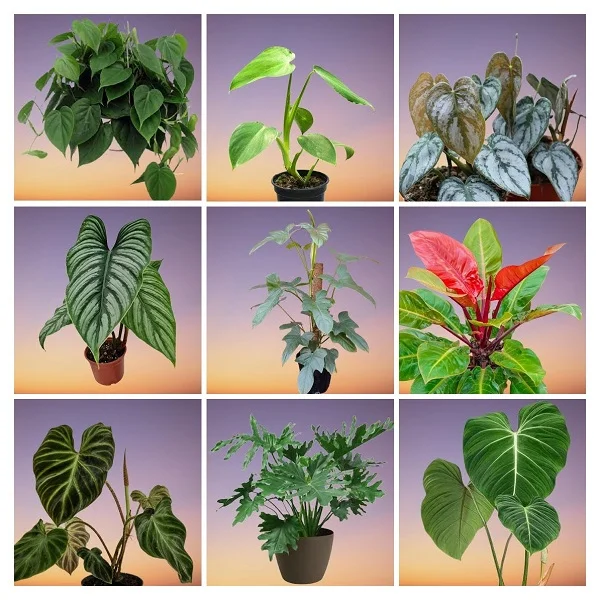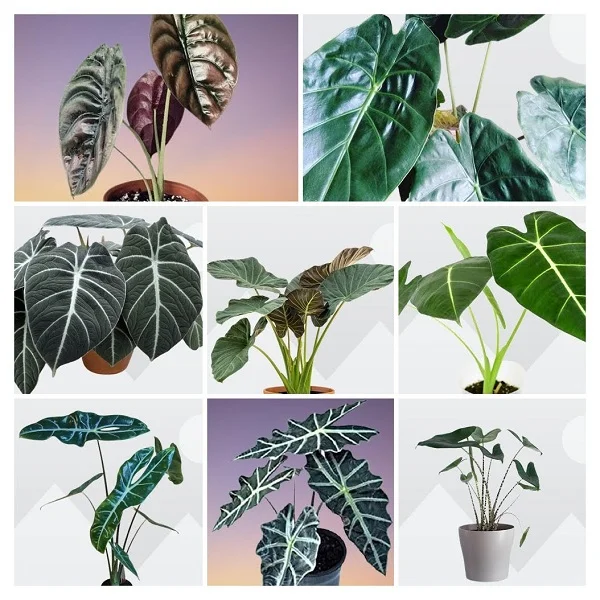15 Pet Friendly Houseplants with Names & Pictures; Safe for Cats, Dogs and other Pets
Some links in this post may be affiliate links
Sometimes cats and dogs can decide to chew or play with your plants. It is a good idea to keep your plants out of the reach of the pets.
It is even better to grow pet friendly plants so that should your pets chew on them, you do not need to worry about their safety.
We have herebelow listed 15 of the best plants that are safe for cats, dogs and other pets. Keep reading for the complete list.
15 Pet Safe Indoor Plants
Best pet friendly houseplants are Areca Palm, Spider Plants, African Violets, Emerald Ripple Peperomia, Calathea, Polka Dot Plants, Chinese Money Plant among others.
1. Areca Palm (Dypsis lutescens)
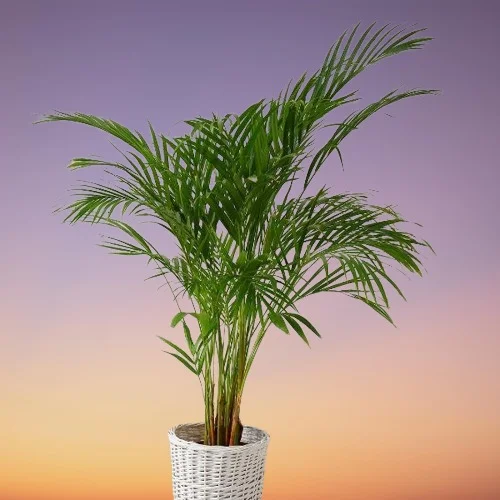
Areca Palm also called Butterfly Palm or Golden Cane Palm is a popular, easy to grow indoor palm which adds an unmatched exotic feel in any space.
Golden Cane Palm's smooth, yellowish, bamboo-like canes and beautiful yellowish-green leaflets make it stand out as a focal point plant. The long, feathery fronds which grow in a canopy lend an air of elegance and sophistication in any space.
Dypsis lutescens is also a good indoor air cleaner which gets rid of formaldehyde, xylene and toulene and is non-toxic to cats, dogs and other pets.
2. Spider Plants (Chlorophytum comosum)
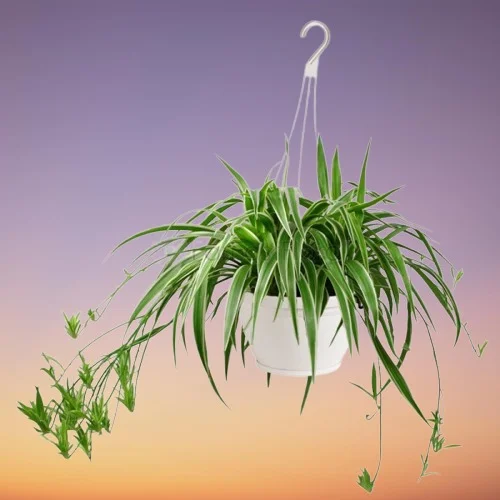
Spider Plant also called Airplane Plant, Spider Ivy or Ribbon Plant is a fast growing, pet-safe plant and is ideal for a hanging basket, tabletop, desktop or pedestal.
Spider Ivy is a good indoor air cleaner which gets rid of benzene, formaldehyde, xylene and toulene from indoor air.
Spider Plant is extremely adaptable and will grow in hot or cool rooms, in sun or shade and it will withstand dry air. It is one of the hard to kill plants that will withstand some level of neglect.
Read more on how to grow and care for Spider Plant
3. Goldfish Plant (Columnea gloriosa)
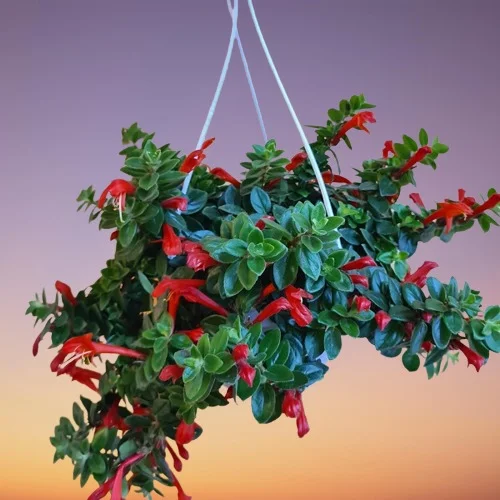
Goldfish Plant is a pet-safe, flowering plant which bears abundant yellow or orange-red tubular flowers year after year. It is ideal for the hanging basket or a pedestal where the trailing stems can be allowed to hang freely.
Columnea are native to tropical America and the Caribbean where they grow as epiphytes attached to the tree bark.
Columnea gloriosa thrives in bright light away from direct sunlight, warm and humid conditions and moderately moist, fertile, well-drained, all purpose potting soil.
Learn more on how to grow and care for Goldfish Plant
4. African Violets (Saintpaulia ionantha)
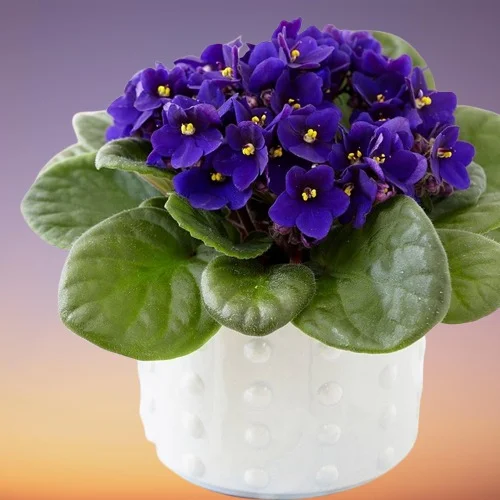
Saintpaulia ionantha or African Violets are a popular plants due to their ability to flower almost any time of the year.
African Violets are compact, pet-friendly plants which allows them to fit in the small spaces making them ideal for the limited spaces.
The major requirements for African Violets are steady warmth, careful watering, good light, high humidity and regular feeding.
Read more on how to grow and care for African Violets
5. Emerald Ripple Peperomia (Peperomia caperata)

Emerald Ripple Peperomia is a compact, perennial plant that is low maintenance and adapts well to indoor growing conditions.
On account of its beautifully colored and patterned foliage, Peperomia caperata is an excellent addition to any plants collection and is non-toxic to cats and dogs; it is safe to grow indoors.
Peperomia caperata requires warm, humid conditions, medium to bright indirect light and moderately moist, fertile, free-draining soil coupled with regular feeding during the growing season.
Learn more on how to grow and care for Emerald Ripple Peperomia
6. Calathea Plants
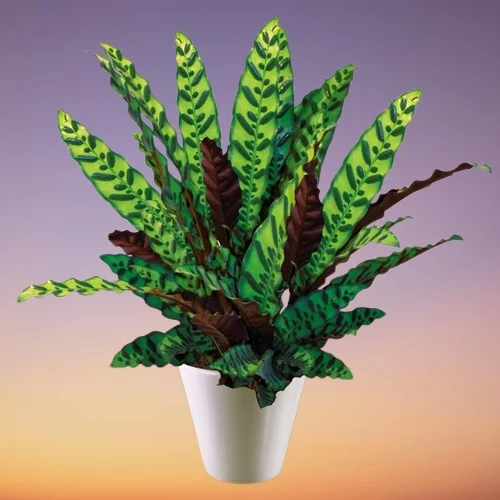
Apart from being spectacular plants due to their ornately patterned leaves, Calathea are non-toxic to cats and dogs. You may grow these plants in a home with pets without any worries of poisoning.
Calatheas are striking plants that will add a splash of color to any space and make a spectacular focal point in any room.
Calathea thrive in medium to bright indirect light away from direct sunlight, warm and humid conditions and moderately moist, fertile, well-drained soil.
Read more on how to grow and care for Calathea Plants
7. Polka Dot Plants (Hypoestes phyllostachya)
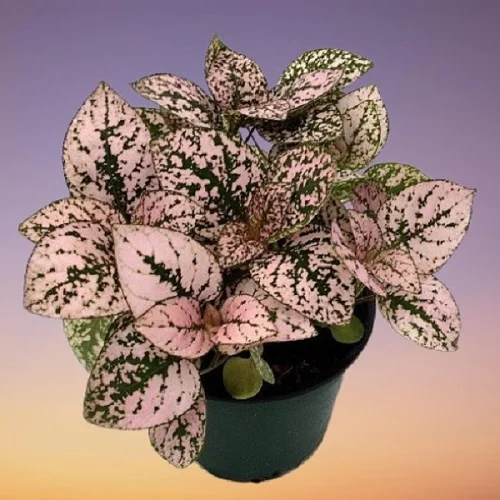
Polka Dot Plant or Freckle Face are popular plants grown for their beauty, with spotted leaves and beautiful coloring which is vivid in bright light.
In a well-lit spot with some direct sunlight, the leaf coloring in Freckle Face will be vivid while in a shady place the foliage will be all-green.
Hypoestes phyllostachya are non-toxic to cats and dogs and are safe to grow indoors.
Learn more on how to grow and care for Polka Dot Plant
8. Maranta Plants (Maranta leuconeura)
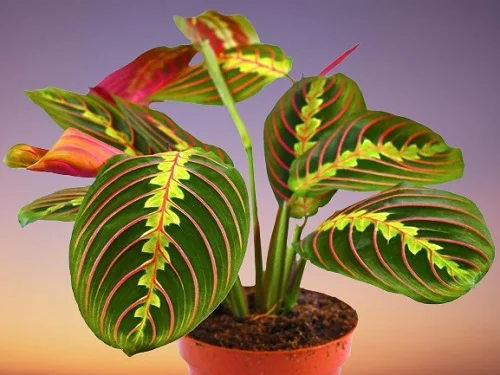
Apart from their curious habit of folding and raising their leaves at night, Marantas are safe for cats and dogs.
Maranta are native to tropical Central and South America and the West Indies. They are named for Bartolomeo Maranta, an Italian physician and botanist of the 16th century.
Maranta Plants blossom in partial light, a warm and humid enviroment and consistently moist, fertile, well-drained soil coupled with monthly feeding during the growing season.
Read on how to grow and care for Maranta
9. Chinese Money Plant (Pilea peperomioides)
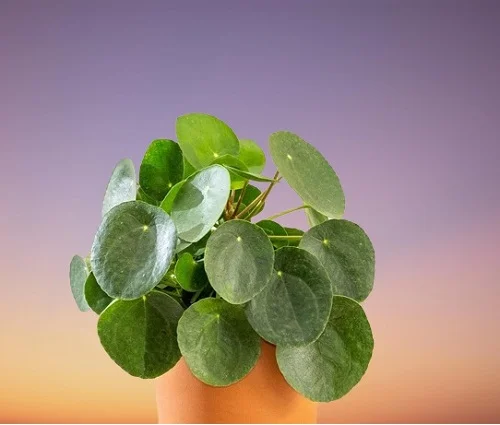
Chinese Money Plant also called Missionary Plant, Pancake Plant, Friendship Plant or UFO Plant is a pet-safe plant.
Missionary Plant is an evergreen succulent plant whose leaves are round, dark green, about 4 inches in diameter and are held on long petioles.
Pancake Plant thrives in bright light away from direct sunlight, warm and moderately humid conditions and moderately moist, fertile, well-drained soil.
Learn more on how to grow and care for Chinese Money Plant
10. Nerve Plants (Fittonia)
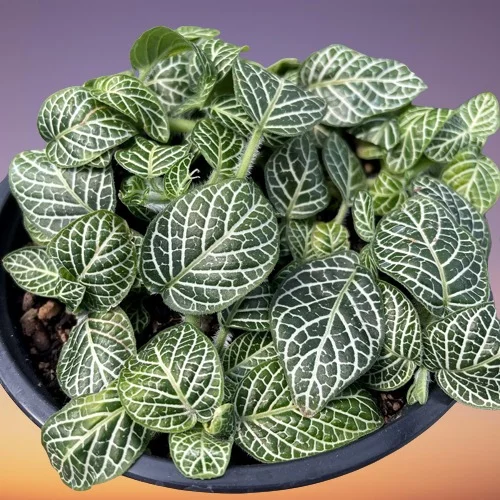
Nerve Plants are compact, pet-friendly plants, easily recognisable due to their leaves which bear a network of white, pink or red veins.
The Nerve Plants also called Net Plant, Lace leaf or Snakeskin are small, low-growing reaching a height of about 6 inches only making them perfect for limited spaces.
Fittonia are easy to grow under room conditions when provided with warmth and abundant moisture around the leaves as is common in a bathroom.
Learn more on how to grow and care for Nerve Plant
11. Watermelon Peperomia (Peperomia argyreia)
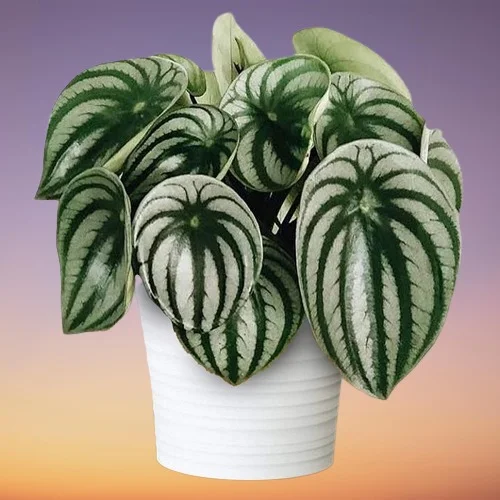
Watermelon Peperomia also called Watermelon Begonia is a popular plant on account of its ease of care and small size. The plant is also non-toxic to pets.
Watermelon Peperomia bears slightly-fleshy, oval-shaped, green leaves, strikingly marked with curved silver stripes resembling the skin of a watermelon and hence the common names.
Peperomia argyreia indoor care is easy as it requires bright light away from direct sunlight, warm and humid conditions and moderately moist, fertile, free-draining soil.
Learn more on how to grow and care for Watermelon Peperomia
12. Echeveria Plants
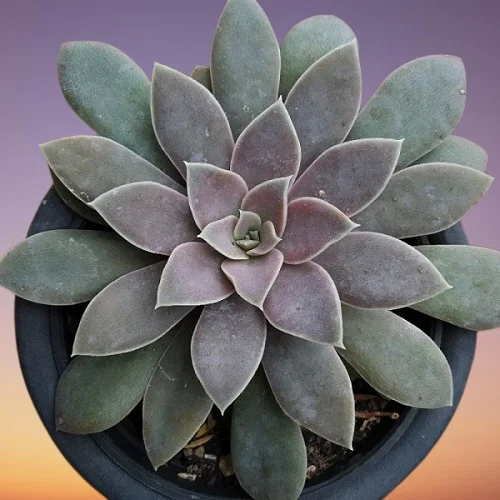
Echeveria Plants come in many forms but are generally small-sized plants that are ideal for limited spaces in the home, office and other suitable places.
Echeveria are succulent plants which bear tightly packed leaves on short stems are non-toxic to pets.
Echeveria Plants thrive in bright light with some direct sunlight, average warmth and moderately moist, well-drained, succulents soil coupled with regular feeding.
Read more on how to grow and care for Echeveria Plants
13. String of Rubies Plant (Othonna capensis)
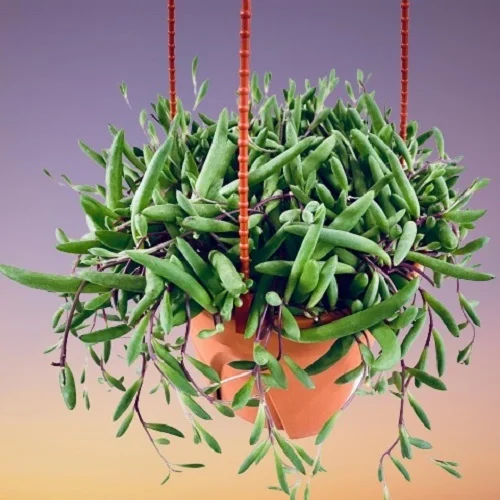
String of Rubies Plant also called String of Pickles, Little Pickles or Ruby Necklace is a trailing plant that is safe to cats and dogs.
String of Pickles is characterized by thin, oval-shaped leaves and reddish-purple stems. The bean-shaped leaves turn a bright ruby red when the plant is grown under bright sunshine.
Othonna capensis grows best in very bright light, average warmth and moderately moist, fertile, well-drained soil with regular feeding.
Learn more on how to grow and care for String of Rubies Plant
14. Air Plants (Grey Tillandsia)
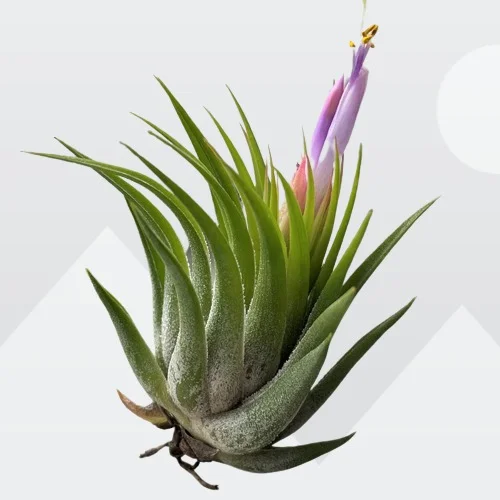
Air Plants also called Grey Tillandsia are friendly to cats and dogs. These plants do not need to be planted in a potting medium as they bear furry scales on their foliage through which they take up water and nutrients.
Grey Tillandsia literally live on air and hence the common name "Air Plants". These plants can be displayed by sticking them on coral, shells, drift wood, hanging them and many other ways.
Air Plants thrive in bright light but away from direct sunlight, warm and humid conditions coupled with fortnightly feeding during the growing season.
Read more on how to grow and care for Air Plants
15. Ponytail Palm (Beaucarnea recurvata)
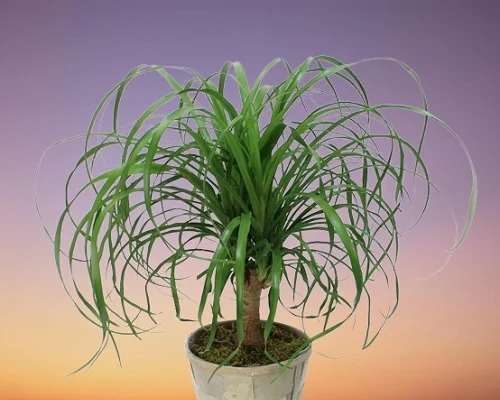
Ponytail Palm also called Elephant Foot Plant is a low maintenance indoor plant with a large swollen bulb which stores water.
The beautiful Beaucarnea recurvata is a hardy, slow-growing succulent that is non-toxic to pets and is safe to grow indoors.
Elephant Foot Plant requires very bright light with some direct sunlight and moderately moist free-draining soil. It does not like soggy soil.
Learn more on how to grow and care for Ponytail Palm
